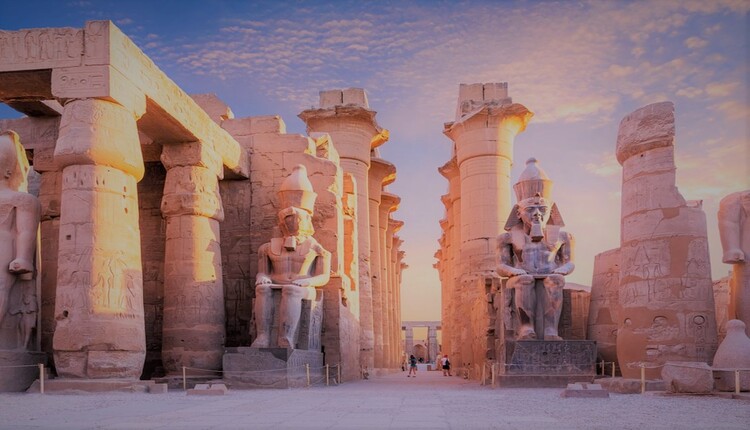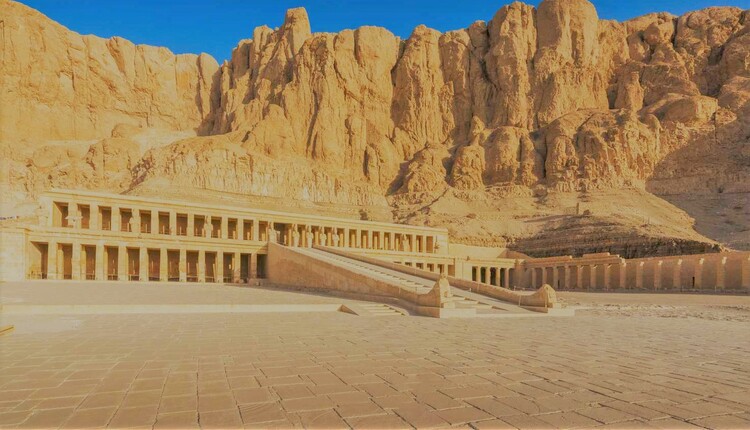Top 6 Luxor’s historical sites to visit

There are many Luxor’s historical sites that lovers of Pharaonic history can visit and learn about, and perhaps this is the reason why Luxor was called the “City of Civilization”. This is because it includes many historical sites that represent a speaking relic of a great civilization, and this is why this city in particular is one of the most important tourism cities in Egypt at all, as it is as old as history itself. In this article, we will show you some of Luxor’s historical sites that you should not miss if you are a lover of history and archeology.
Read Also: The Most Famous Dishes in the City of Luxor
Top Luxor’s historical sites
The city of Luxor attracts many culture and history buffs, thanks to the huge cultural and historical heritage that this city possesses.
Wherever you step in the city of Luxor, you will find a speaking relic of a great civilization. And below we have prepared for you a list that includes some Top Luxor’s historical sites for you to visit there:
Karnak Temple

Topping our list of Luxor’s historical sites is Karnak, a temple complex of 11 temples dating back more than 4,500 years.
To be the oldest houses of worship known to history, so the Karnak Temple is one of the most important and most famous monuments in Egypt in the world.
The construction of the Karnak Temple began from the inside from the Holy of Holies, then to the outside.
Where the largest column hall in the world, which contains 134 columns, then the entrance to the temple, which is the famous Rams Road.
- Visiting fees: from 10 to 65 Egyptian pounds for local visitors || from 150 to 240 Egyptian pounds for foreign visitors.
Read Also: The Karnak .. 10 Tips to Consider When You Travel to Luxor’s Most Famous Temple
Luxor temple

The second most famous Luxor’s historical sites on our list today is the Luxor Temple, which represents the most prominent temples of the eastern mainland, and is located near the Karnak Temple.
Its construction dates back to the era of the Middle Kingdom, by order of King “Amenhotep III”; To serve as a home for the god Amun-Ra.
The Luxor Temple is distinguished by its huge facilities, which start with its large gate and the statues of Ramses II sitting on both sides of the entrance. And two obelisks, one standing in its place, and the other has been in the French capital, Paris, since 1836 AD.
Then there is the huge edifice of Ramesses II, 65 m wide, after that we will find the huge corridor consisting of two rows of great papyrus columns, and many distinctive edifices and rooms.
- Visiting fees: 20 Egyptian pounds for local visitors || 140 Egyptian pounds for foreign visitors.
Mortuary Temple of Hatshepsut

The Mortuary Temple of Hatshepsut or the Temple of Hatshepsut deserves the title of the jewel of the temples of Luxor, as it is the largest and most important funerary temple in the era of the Pharaonic state.
This temple is one of the most famous Luxor’s historical sites, which tourists from all over the world come to; to admire the grandeur of its unique architecture.
The purpose of his stay was; The worship of the god Amun, the sun god, and the temple consists of two parts, the outer part is for the living, and the inner part is for the dead.
- Visiting fees: 10 Egyptian pounds for local visitors || 60 Egyptian pounds for foreign visitors.
Read Also: What is the oldest Egyptian monument? 5 antique monument
Valley of the Kings

Tourists always put the Valley of the Kings at the top of the list of the most important Luxor’s historical sites and Egypt in general. And this is the reason behind the thousands of delegations who come to this historical place daily.
It is a site that includes the most important royal tombs and some important people from the entourage of the ruling families of Pharaonic Egypt. As there are about 64 tombs, the most important of which is the tomb of King Tutankhamun.
- Visiting fees: 20 Egyptian pounds for local visitors || 200 Egyptian pounds for foreign visitors.
Valley of the Queens

The Valley of the Queens is located in the far south of the western mainland. It was built in the same architectural style as the Valley of the Kings.
This valley is close to the Valley of the Kings, and the most famous tombs in the Valley of the Queens are the tomb of Queen Nefertari, the beloved wife of Ramesses II.
- Visiting fees: 20 Egyptian pounds for local visitors || 100 Egyptian pounds for foreign visitors.
Read Also: What is unique about Hatshepsut temple?
Ramesseum temple

The mortuary temple of Ramesseum is located in the western mainland, and it was built by King Ramesses II.
King Ramesses II was fond of building temples in Luxor and Nubia, but the most important of them was the Ramesseum Temple, because it includes huge statues of King Ramses II.
This is in addition to the pictures and inscriptions on the walls of the temple, which tell the nature of life during that historical era.
The most famous of which are the inscriptions that narrate the planning and details of the famous Battle of Kadesh.
That battle was between King Ramesses II and the Hittites, and it ended with the victory of King Ramesses II, so it is among the most famous Luxor’s historical sites.
- Visiting fees: 10 Egyptian pounds for local visitors || 80 Egyptian pounds for foreign visitors.








